Disclaimer: The views expressed within this website do not represent the views of the National Oceanographic Centre of Southampton; University of Southampton; or Falmouth Marine School. We would like to thank Falmouth Marine School for the collaborative efforts involved.

CTD

Phytoplankton Lab
100ml of phytoplankton samples were preserved with formalin and stained with in Lugol’s
Iodine. 90ml of excess Lugol’s iodine was removed and 1ml of the sample was analysed
in a Sedgewick-
Zooplankton Lab
The trawl samples had been preserved in formalin over night. The following morning the contents of each sample were estimated using a Bogorov Chamber. The list below contains some of the more common zooplankton groups found in the samples:
The diatoms Chaetoceros, Pseudonitzchia and Coscinodiscus were fairly ubiquitous at Station 1. The dissolved silicon profile at this station was relatively uniform with depth, suggesting that these diatoms were evenly distributed through the water column.
At station 2, the dissolved silicon profile exhibits a decrease to ~12m, and an increase below this depth (figure). Table shows that the diatom species found at this station are largely limited to the upper layers of the water column, generally being found in their highest abundances above 17m. Similarly, at station 3, most of the diatom species are found in the upper 23m of the water column. Dissolved silicon concentrations are relatively uniform above this depth, and concentrations increase below, see salinity.
Leptocylindrus danicus and Thallasiosira spp., diatoms often associated with deep
chlorophyll maxima (DCM) (Kemp et al, 2000), were found between 17m-
The dinoflagellates Alexandrium and Karenia mikimotoi were associated with station 5, close to the front, see Table. This is perhaps to be expected, as dinoflagellates are often found at frontal systems.
The highest number of individuals per m3 was found at station 4, as seen in (fig.), which also has a wide band of backscatter visible on the corresponding ADCP data. Station 3 has two bands of backscatter visible in ADCP, one at ~20m and another, slightly narrower band at ~10m. Station 3 had a high total abundance of zooplankton, with the highest numbers being found in the 20m – surface tow, which would have passed through both these layers.
Cirripede larvae were not found at station 4, and were found in their highest numbers
at station 3 between 20m -
As expected, copepods dominated at all stations except station 4. Copepod dominance
was particularly notable at Station 1, where they accounted for 86% of the total
sample. This dominance of copepods is consistent with results from other North Atlantic
coastal stations, including station L4 off Plymouth, where copepods often account
for between 60%-
The diversity of each station is difficult to estimate due to the fact that copepods were not identified to species level. However, station 2 had the most “even” profile, with the highest abundances of echinoderm, polychaete and decapod larvae. Although copepods were the dominant group found here, it was a less pronounced dominance than at other stations, accounting as they did for only 32% of the total sample, see graphs to the right.
Appendicularians were also prevalent in samples from stations 3 and 4, indeed, they were the dominant group at station 4. High abundances of appendicularians have been noted in previous studies of the zooplankton of the Western Channel in the summer (Eloire et al, 2010), so it is likely that our results are indicative of the seasonal pattern of the area.
Vertical tows were performed with a 200µm net so it is possible that some of the smaller zooplankton species may not have been sampled.
For each Niskin water sample, two chlorophyll samples were collected on 0.7µm glass fibre filters. The filters were stored overnight in acetone and measured as per the protocol stated by Parsons et al (1984). Similar to the Fluorometry data, Deep Chlorophyll Maxima were discovered at depths that varied between each station, and not much was found at Station 1.
Sub-
Phosphate and dissolved silicon levels were measured as per the protocol stated by
Parsons et al (1984) using a U-
Nitrate was measured using flow injection analysis as per the protocol stated in Johnson and Petty (1983).
Oxygen
Dissolved oxygen was measured as per the protocol stated in Grasshoff et al (1999). The data for some stations is sporadic as some data points are missing. The equipment malfunctioned and backup phials were not taken; great care should be taken in the mixing process during titration.
Station 1
There is a relatively deep chlorophyll maximum at depths recorded slightly higher than a similar structure at Station 2. Dissolved silicon is relatively constant throughout the water column. Phosphate is present in slightly higher concentrations at the surface than at depths and nitrate is much higher in surface waters than at depths, see graph to right. This is due to the riverine inputs at this station as it is located at the mouth of the Fal Estuary at Black Rock. The results from the nutrient profiles suggests substantial mixing due to tidal impacts or freshwater inputs. However, nitrate seems to be absent from deeper waters, which contradicts mixing theory, however it may be depleted by phytoplankton.
Station 2
Due to the location of Station 2, a DCM should be noticeable. However, instead there
is a low chlorophyll value seen at 10m depth, equating to 2.12ug.L-
Station 3
Station 3 shows a chlorophyll maximum of 3.47 ug/l at 35m depth. Nutrients show significant change throughout the water column, with nutrient concentrations being high in deeper waters, although phosphate was found to be very high at the surface. It would seem that, like station 2, there is stratification and migration of phytoplankton. However, unlike station 2, there were variations in dissolved silicon concentrations with depth, see graph to the right, suggesting that perhaps diatoms are present even though waters may be stratified, see biology.
Station 4
Dissolved oxygen and chlorophyll have similar vertical profiles at Station 4, reinforcing
the assumption that chlorophyll is used as a proxy for primary production. The chlorophyll
maximum, with the highest value of 3.65ug.L-
There is a chlorophyll maximum of 4.38ug.L-
Physical Separate station data can be found above and to the right
A rapid decrease in temperature, over the first few meters from the surface, was
noted at all stations, see Temperature. Stations 3, 4 and 5 all had pronounced thermoclines
at 25-
Salinity
Salinity remained relatively constant with depth, except for where there were haloclines present at stations 3, 4 and 5, see Salinity. At these haloclines, the salinity increased rapidly before settling out again, with variations of 0.15, 0.05 and 0.12 at stations 3, 4 and 5 respectively. At stations 1 and 2, there was a slight decrease in salinity over the whole profile. The lack of a pronounced halocline reinforces the theory of this being a more poorly stratified station. This allows a larger depth range of more optimal conditions in which phytoplankton can grow. Perhaps the greater depths of stations 3, 4 and 5 are what caused haloclines to form there, rather than at stations 1 and 2. The greatest salinity towards the surface was found at station 4, 35.22, which was the furthest away from land and freshwater influence. The opposite was true of station 1 (salinity of 35.14). The depths of the haloclines correspond to the depths of the thermoclines found in the CTD temperature profiles, suggesting a relationship between the two parameters, see graphs to the right.
Density
All of the stations exhibit an increase in density with depth implying vertical stability
within the water column, see Density. Station 1 is relatively well mixed, displaying
the least variation among all stations. Such mixing patterns reflect the mixed nature
of the Fal River. A steady increase of density with depth is seen at station 2 with
no pronounced pycnoclines. This station was sampled at high water slack, and the
absence of a pycnocline could be caused by the ebb and flow of surface waters. At
stations 3, 4 and 5 the densities distinctly change at 28m, 25m and 18m deep respectively.
Station 3 had the greatest density range of 1kg.m-
All of the stations, except Station 1, are shown to contain deep chlorophyll maxima at varying depths, see Fluorometry. Station 2 shows a chlorophyll maximum around 10 meters depth (fluorometry reading of 0.13V); as the later stations have deeper chlorophyll maximums, this is a possible indication of vertical migration. Fluorometry spikes recorded at stations 3, 4 and 5 correspond with the pycnoclines indicated on the density graph (at ~28m, ~25m and ~18m respectively). The fluorometry spikes sit just above the corresponding pycnoclines at ~ 25m (station 3), ~20m (station 4) and ~18m (station 5), this suggests the presence of deep chlorophyll maxima at these stations. The largest spike is at station 5, which was the closest sampling point to the front.
Transmission
The changes in transmission relate to the amount of Suspended Particulate Matter, SPM, in the water column; for example, transmission levels of 100v would represent clear water. On the CTD profile for station 1, the transmission ranged from 3.74v at the surface (1.23m) to 3.73v at 30.73m, as shown by Transmission; this expresses the uniform properties of the water column. At Station 2, a similar profile was seen: as depths increased, values of 3.67v at 1.17m down to 3.71v at 33.48m were recorded. At Station 3 the clarity increased temporarily, showing a possible decrease in SPM. The depth profile at Station 4 indicated an increase in SPM with depth; the transmission closest to the surface (1.22m) was 3.88v and was lower, 3.76v, at 70.50 metres. Station 5, closest to the front, showed the most variation in transmission, with the lowest recorded value of transmission (0.02v) being at 2.27m. A change in transmission however, from 0.27v to 3.55v was recorded from 0.63m to 62.91m, respectively; indicating a mass of planktonic activity near the surface, dissipating with depth.
ADCP
Backscatter intensity relates to Suspended Particulate Matter composition and size distribution (Vicente et al. 2010). There are generally low backscatter values at station 1, with minimums below 20m of 64Db as shown in figx. Both stations 1 & 2 experience random spots of high intensity backscatter within 3m of the surface; these spots are larger and more frequent at station 2. Stations 3, 4 and 5 all display uniform bands of backscatter at ~20m with varying intensities. These bands of backscatter likely allude to the presence of large zooplankton communities in the water column, with the intensity of the backscatter acting as a proxy for the population size. This would suggest that the largest zooplankton community would be found at station 4 with a very wide band of backscatter and intensity values of >80Db, see Biological for details.
Richardson Number
There are both turbulent and laminar elements to the water column at each station,
however turbulent flow is prevalent, see Richardson Number. Laminar flow is present
at Richardson values of greater than one; this can be observed at ~3m depth at station
1. There are examples of laminar layers at each station; however they are primarily
toward the deeper end of the profiles. There are a few plots that cross the Ri =
0.25 threshold but do not pass the Ri = 1 lag zone boundary. These would therefore
be considered in a phase of transition, but would effectively remain laminar. The
primarily turbulent nature of the water column encourages vertical transport of properties
and the shear between the two interfaces which promotes entrainment i.e Kelvin-
It is apparent from the Stratification Index data that Station 5 is the most stratified area of water that was sampled, with a range of values between roughly 3 and 5. This is expected at station 5 as it is the closest station to the offshore side of the front, yet is not as heavily affected by offshore influences as station 3 and 4. Station 3 and 4 are the most well mixed stations due to their distance offshore. The difference in stratification index can allude to the phytoplankton species present at each station. Larger species of phytoplankton such as diatoms would be expected at station 3 and 4, whereas dinoflagellates would be more common in heavily stratified areas. However, the presence of these communities are also nutrient dependent. For more information on the biology see the biological section.
Attenuation Coefficient
The attenuation coefficient, k, was calculated for each station based on the equations below.
The two methods of calculating the attenuation coefficient, k, agree fairly well, giving similar values as seen in the above table. The attenuation coefficient is lowest at station 4, which is furthest offshore, therefore the euphotic zone is the deepest of all stations measured and has a greater depth for potential primary production.
Overview
Summary
A front was encountered between Stations 2 and 5. Station 5 produced the largest chlorophyll maximum, see here. Station 2, as expected, shows the largest measured cell count of diatoms due to its position on the estuarine side of the front, see here. Station 5 is the most stratified station with an index between 3 and 5; this corresponds to the high numbers of smaller phytoplankton species, see here. The highest number of zooplankton was found at station 3 and 4 suppressing relatively large phytoplanktonic populations. Speciation changed with distance off coast, see Biology.
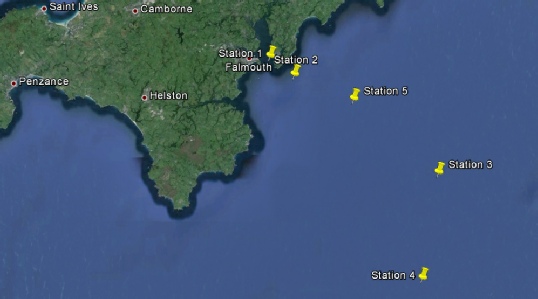
Sampling
Samples were collected at 5 stations directly offshore of Falmouth in the English
Channel to determine the presence and location of a front. Vertically towed nets
with 200µm mesh collected samples of zooplankton at each station. Niskin bottles
attached to a CTD rosette were deployed and the data from the descending CTD, found
to the left, was used to determine depths to fire the Niskin bottles on the ascent.
Sub-
Eloire, D., Somerfield, P.J., Conway, D.V.P., Halsband-
Grasshoff, K., K. Kremling, and M. Ehrhardt. (1999). Methods of seawater analysis
3rd ed. Wiley-
Johnson K. and Petty R.L.(1983) “Determination of nitrate and nitrite in seawater
by flow injection analysis”. Limnology and Oceanography 28 1260-
Kemp, A.E.S., Pike, J., Pearce, R.B., Lange, C.B., 2000. The "Fall dump" -
Parsons T. R. Maita Y. and Lalli C. (1984) “ A manual of chemical and biological methods for seawater analysis” 173 p. Pergamon.
Pingree, R. D., Pugh, P. R., Holligan, P. & Forster, G. R., 1975. Summer phytoplankton
blooms and red tides along tidal fronts in the approaches to the Englsih Channel.
Nature, Volume 258, pp. 672-
Pingree, R.D. and Griffiths, D.K. (1978). Tidal fronts on shelf seas around the British
Isles. J. Geophys. Res. 83 (C9), 4615-
Sharples, J., and J. H. Simpson. "Shelf-
VICENTE V.M., LAND P.E., TILSTONE G.H., WIDDICOMBE C. and FISHWICK J.R. (2010). Particulate scattering and backscattering related to water constituents and seasonal changes in the Western English Channel. JOURNAL OF PLANKTON RESEARCH. 32 (5).603–619
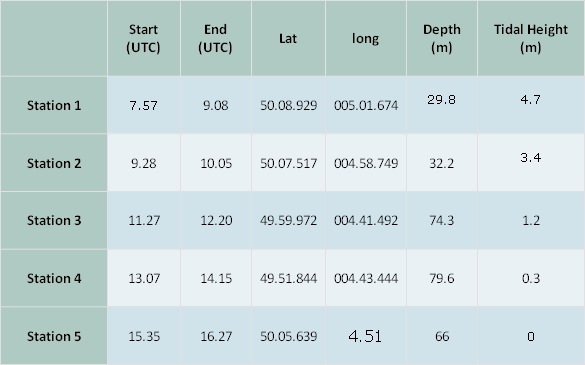

Station 1

Station 2

Station 3

Station 4

Station 5

Parameters
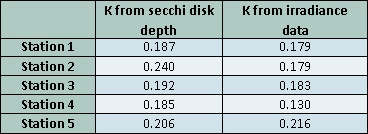



Temperature
Salinity

Density

Fluorescence

Transmission

ADCP
Station 1
Station 3
Station 4
Station 2
Station 5

Physics

Richardson Number

Stratification Index

Nutrients

Station 1

Station 2

Station 3

Station 4

Station 5

Dissolved Silicon

Nitrate

Phosphate

Chlorophyll a

Oxygen

Zooplankton

Station 1

Station 2

Station 3

Station 4

Station 5

Totals

Split

Cirripede larva
vs Mysodacea
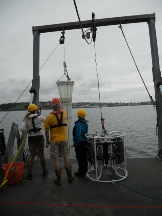
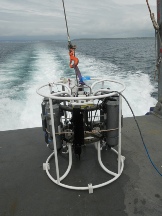
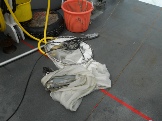
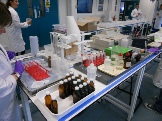
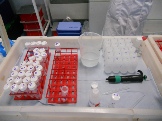
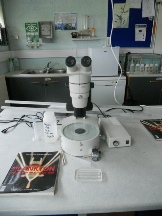
| Activites |
| About Us |
| References |
| Physical |
| Chemical |
| Biological |
| References |
| Physical |
| Chemical |
| Biological |
| References |
| Poster |
| References |
| YSI Probe |
| Current Meter |
| Light Meter |
| References |